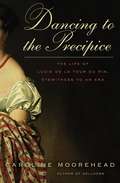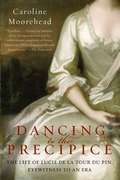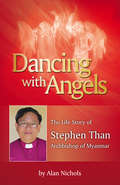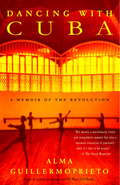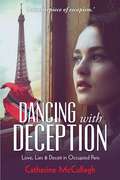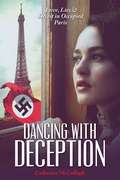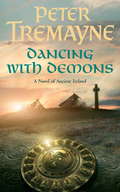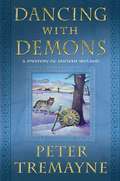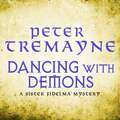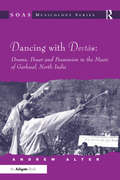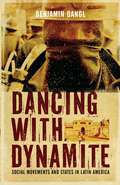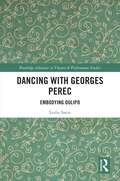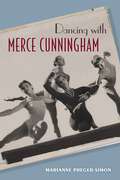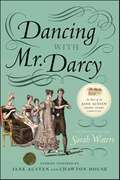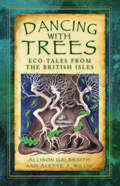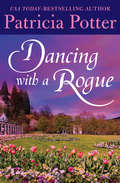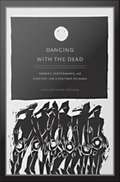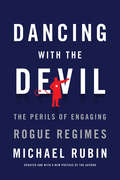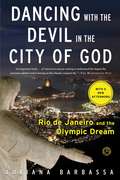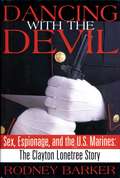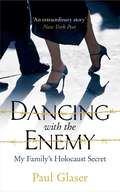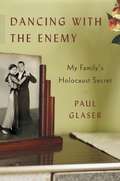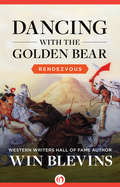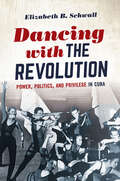- Table View
- List View
Dancing to the Precipice
by Caroline MooreheadHer canvases were the court of Louis XVI and Marie Antoinette; the Great Terror; America at the time of Washington and Jefferson; Paris under the Directoire and then under Napoleon; Regency London; the battle of Waterloo; and, for the last years of her life, the Italian ducal courts. Like Saint-Simon at Versailles, Samuel Pepys during the Great Fire of London, or the Goncourt brothers in nineteenth-century France, Lucie Dillon--a daughter of French and British nobility known in France by her married name, Lucie de la Tour du Pin--was the chronicler of her age.La Rochefoucauld called her "a cultural jewel." The Sultan of the Ottoman Empire favored her for his dinner companion in Paris. Napoleon requested she attend Josephine. Her friends included Talleyrand, Madame de Staël, Chateaubriand, Lafayette, and the Duke of Wellington, with whom she played as a child. She witnessed firsthand the demise of the French monarchy, the wave of Revolution and the Reign of Terror, and the precipitous rise and fall of Napoleon. She spent two years as an émigré in the newly independent United States (on a farm in Albany) but was also a familiar of Regency London. A shrewd, determined woman in a turbulent age of men, Lucie de la Tour du Pin watched, listened, reflected--and wrote it all down, mixing politics and court intrigue, social observation and the realities of everyday existence, to offer a fascinating chronicle of her era.In this compelling biography, Caroline Moorehead illuminates the extraordinary life and remarkable achievements of this strong, witty, elegant, opinionated, and dynamic woman who survived personal tragedy, including the loss of six children, and periods of extreme danger, exile, poverty, and illness. Meticulously researched, brilliantly written, and vastly entertaining, Moorehead's chronicle of Lucie's life is an incomparable social history of her times.
Dancing to the Precipice: The Life of Lucie de la Tour du Pin, Eyewitness to an Era
by Caroline MooreheadA life of Lucie Dillon, Madame de la Tour du Pin by the biographer of Bertrand Russell, Freya Star, Iris Origo and Martha Gellhorn.
Dancing with Angels
by Alan NicholsStephen Than Myint Oo has been to prison, suffered torture and released without conviction. The shadow of his prison record followed him for years, even while studying theology. But his faith and a slowly emerging commitment to democracy and civil society were ignited by an experience of angels, which reinforced a mission plan he had as Archbishop of Myanmar for a tiny Anglican minority within a Buddhist country to take their place in the nation. This is his story.
Dancing with Cuba: A Memoir of the Revolution
by Alma GuillermoprietoIn 1970 a young dancer named Alma Guillermoprieto left New York to take a job teaching at Cuba's National School of Dance. For six months, she worked in mirrorless studios (it was considered more revolutionary); her poorly trained but ardent students worked without them but dreamt of greatness. Yet in the midst of chronic shortages and revolutionary upheaval, Guillermoprieto found in Cuba a people whose sense of purpose touched her forever. In this electrifying memoir, Guillermoprieto-now an award-winning journalist and arguably one of our finest writers on Latin America- resurrects a time when dancers and revolutionaries seemed to occupy the same historical stage and even a floor exercise could be a profoundly political act. Exuberant and elegiac, tender and unsparing, Dancing with Cuba is a triumph of memory and feeling.
Dancing with Deception
by Catherine McCullaghLove, lies and deceit in occupied Paris: a young nurse finds herself caught between the resistance and the Gestapo. Marisa Carnarvon is an enigma to her family. In 1938 she turns her back on her privileged Sydney lifestyle to become a nurse in a London hospital. <p><p> With conflict looming, she moves to a Red Cross hospital in Paris, totally unprepared for the forces the approaching maelstrom will unleash. In June 1940 the Germans invade Paris and the young nurse is soon pressured by the leader of the local resistance cell to work for the fledgling movement. Marisa's life becomes increasingly precarious with the arrival of a new Gestapo chief who sets out to seduce her, and the hunt for a traitor in the organisation that throws her into the resistance firing line. As war approaches its climax, Marisa's Gestapo lover flees and the young nurse follows. Only now does Marisa finally discover the truth behind the man whose life was a masterpiece of deception.
Dancing with Deception: Love, Lust & Deceit in Occupied Paris
by Catherine McCullaghMarisa Carnarvon is an enigma to her family. In 1938 she turns her back on her family’s money and status and leaves her comfortable pre-war Sydney lifestyle to become a nurse in a London city hospital. Against the backdrop of looming conflict, she moves to a Red Cross hospital in Paris in July 1939, totally unprepared for the challenge of life in an occupied city. In June 1940 the Germans invade Paris and the young nurse is soon pressured by the leader of the local resistance cell to work for the fledgling movement. Her life is further enmeshed by the arrival of a new Gestapo chief who sets out to seduce her. Marisa’s position becomes increasingly precarious as the resistance hunts for a traitor in the organisation. Suspicion falls on one of the hospital’s doctors and he is murdered, throwing Marisa into the resistance firing line. As the war approaches its climax, Marisa’s Gestapo lover flees and the young nurse follows. He is ultimately revealed as a key operator in a resistance escape line that traverses four countries. But he has a secret which threatens to crush him. Marisa finally discovers the truth behind the man who risked his life to save others in a masterpiece of deception.
Dancing with Demons (Sister Fidelma Mysteries Book 18): A dark historical mystery filled with thrilling twists
by Peter Tremayne Dancing With DemonsSister Fidelma must investigate the murder of the High King himself and by doing so risk civil war, in Peter Tremayne's brilliant eighteenth novel in the ever-popular series.PRAISE FOR THE SISTER FIDELMA SERIES: 'Tremayne's super-sleuth is a vibrant creation' Morgan Llywelyn, 'A brilliant and beguiling heroine. Immensely appealing' Publishers Weekly When Sechnussach, High King of Ireland, is found dead in his bedchamber with his throat cut, all clues seem to suggest an all-too-obvious prime suspect. Dubh Duin, the chieftain of the clan Cinél Cairpre, was found with the murder weapon in his hand when the High King's guards entered the royal chamber, before taking his own life. The Chief Brehon of Ireland asks Sister Fidelma to investigate and find out what possible motives could have driven Dubh Duin to assassinate the High King. Her investigations reveals an intricate web of conspiracy and deception that threatens to unbalance the five kingdoms and send them spiralling into a violent and bloody civil war and religious conflict... What readers are saying about DANCING WITH DEMONS:'[Peter Tremayne] manages to weave such a great mystery with such complex little twists. I love all the Sister Fidelma mysteries''Adventurous all the way. Five stars''The characters are original, the settings are imaginativeand true-to-life and the intricate plots form enough threads to keep you guessing at every turn'
Dancing with Demons: A Mystery of Ancient Ireland (Sister Fidelma Mystery #18)
by Peter TremayneIn the late 7th Century, the High King of Ireland is killed at night in the middle of his compound. Who killed him is not in question - there are unimpeachable witnesses that point directly to the clan chieftain responsible. Dubh Duin is, after all, found by the High King's guards in the High King's bed chamber holding the murder weapon. But with impending civil war in the balance, the motive for the murder becomes of paramount importance. The Chief Brehon of Ireland asks Fidelma of Cashel - sister to the King of Muman and a dalaigh - to investigate. What her investigations reveal is an intricate web of conspiracy and deception that threatens to unbalance the five kingdoms and send them spiraling into a violent and bloody civil war and religious conflict. And it's up to Fidelma to not only see to justice but to prevent the violent fracturing of an increasingly fragile peace.
Dancing with Demons: A dark historical mystery filled with thrilling twists (Sister Fidelma)
by Peter Tremayne Dancing With DemonsSister Fidelma must investigate the murder of the High King himself and by doing so risk civil war, in Peter Tremayne's brilliant eighteenth novel in the ever-popular series.PRAISE FOR THE SISTER FIDELMA SERIES: 'Tremayne's super-sleuth is a vibrant creation' Morgan Llywelyn, 'A brilliant and beguiling heroine. Immensely appealing' Publishers Weekly When Sechnussach, High King of Ireland, is found dead in his bedchamber with his throat cut, all clues seem to suggest an all-too-obvious prime suspect. Dubh Duin, the chieftain of the clan Cinél Cairpre, was found with the murder weapon in his hand when the High King's guards entered the royal chamber, before taking his own life. The Chief Brehon of Ireland asks Sister Fidelma to investigate and find out what possible motives could have driven Dubh Duin to assassinate the High King. Her investigations reveals an intricate web of conspiracy and deception that threatens to unbalance the five kingdoms and send them spiralling into a violent and bloody civil war and religious conflict... What readers are saying about DANCING WITH DEMONS:'[Peter Tremayne] manages to weave such a great mystery with such complex little twists. I love all the Sister Fidelma mysteries''Adventurous all the way. Five stars''The characters are original, the settings are imaginative and true-to-life and the intricate plots form enough threads to keep you guessing at every turn'
Dancing with Demons: A dark historical mystery filled with thrilling twists (Sister Fidelma)
by Peter Tremayne Dancing With DemonsSister Fidelma must investigate the murder of the High King himself and by doing so risk civil war, in Peter Tremayne's brilliant eighteenth novel in the ever-popular series.When Sechnussach, High King of Ireland, is found dead in his bedchamber with his throat cut, all clues seem to suggest an all-too-obvious prime suspect. Dubh Duin, the chieftain of the clan Cinél Cairpre, was found with the murder weapon in his hand when the High King's guards entered the royal chamber, before taking his own life. The Chief Brehon of Ireland asks Sister Fidelma to investigate and find out what possible motives could have driven Dubh Duin to assassinate the High King. Her investigations reveals an intricate web of conspiracy and deception that threatens to unbalance the five kingdoms and send them spiralling into a violent and bloody civil war and religious conflict... (P) Soundings, 2007
Dancing with Devtas: Drums, Power and Possession in the Music of Garhwal, North India (SOAS Studies in Music)
by Andrew AlterIn the Central Himalayan region of Garhwal, the gods (devtas) enjoy dancing. Musicians - whether ritual specialists or musical specialists - are therefore an indispensable part of most entertainment and religious events. In shamanistic ceremonies, their incantations, songs and drumming 'make' the gods possess their mediums. In other contexts, such as dramatic theatrical renditions of stories of specific deities, actors 'dance' the role of their character having become possessed by the spirit of their character. Through the powerful sounds of their drumming, musicians cause the gods to dance. Music, and more particularly musical sound, is perceived in Garhwal as a powerful force. Andrew Alter examines music and musical practice in Garhwal from an analytical perspective that explores the nexus between musical sounds and performance events. He provides insight into performance practice, vocal techniques, notions of repertoire classification, instruments, ensembles, performance venues, and dance practice. However, music is not viewed simply as a system of organized sounds such as drum strokes, pitch iterations or repertoire items. Rather, in Garhwal, the music is viewed as a system of knowledge and as a system of beliefs in which meaning and spirituality become articulated through potent sound iterations. Alter makes a significant contribution to the discipline of ethnomusicology through a detailed documentation of musical practice in the context of ritual events. The book offers a traditionally thorough historical-ethnographic study of a region with the aim of integrating the local field-based case studies of musical practices within the broader Garhwali context. The work contains invaluable oral data, which has been carefully transliterated as well as translated. Alter blends a carefully detailed analysis of drumming in conjunction with the complex ritual and social contexts of this sophisticated and semantically rich musical practice.
Dancing with Dynamite
by Benjamin DanglGrassroots social movements played a major role electing left-leaning governments throughout Latin America. Subsequent relations between these states and "the streets" remain troubled. Contextualizing recent developments historically, Dangl untangles the contradictions of state-focused social change, providing lessons for activists everywhere.
Dancing with Georges Perec: Embodying Oulipo (ISSN)
by Leslie SatinThis book explores the relationship of the life and work of the remarkable Parisian-Jewish writer Georges Perec (1936–1983) to dance."Dancing" addresses art-making parallels and their personal and sociocultural contexts, including Perec’s childhood loss of his parents in the Holocaust and its repercussions in the significance of the body, everydayness, space, and attention permeating his work. This book, emerging from the author Leslie Satin’s perspective as a dancer and scholar, links Perec’s concerns with those of dance and demonstrates that Perec’s work has implications for dance and how we think about it. Moreover, it is framed as a performative autobiographical enactment of the author's relationship to Perec, periodically linking their written, danced, and imagined lives.This exploration will be of great interest to dancers, dance scholars, and dance students interested in contemporary experimental dance and contemporary dance.
Dancing with Merce Cunningham
by Marianne Preger-SimonDancing with Merce Cunningham is a buoyant, captivating memoir of a talented dancer’s lifelong friendship with one of the choreographic geniuses of our time. Dancing with Merce Cunningham is a buoyant, captivating memoir of a talented dancer’s lifelong friendship with one of the choreographic geniuses of our time. Marianne Preger-Simon’s story opens amid the explosion of artistic creativity that followed World War II. While immersed in the vibrant arts scene of postwar Paris during a college year abroad, Preger-Simon was so struck by Merce Cunningham’s unconventional dance style that she joined his classes in New York. She soon became an important member of his brand new dance troupe—and a constant friend. Through her experiences in the Merce Cunningham Dance Company, Preger-Simon offers a rare account of exactly how Cunningham taught and interacted with his students. She describes the puzzled reactions of audiences to the novel non-narrative choreography of the company’s debut performances. She touches on Cunningham’s quicksilver temperament—lamenting his early frustrations with obscurity and the discomfort she suspects he endured in concealing his homosexuality and partnership with composer John Cage—yet she celebrates above all his dependable charm, kindness, and engagement. She also portrays the comradery among the company’s dancers, designers, and musicians, many of whom—including Cage, David Tudor, and Carolyn Brown—would become integral to the avant-garde arts movement, as she tells tales of their adventures touring in a VW Microbus across the United States. Finally, reflecting on her connection with Cunningham throughout the latter part of his career, Preger-Simon recalls warm moments that nurtured their enduring bond after she left the dance company and, later, New York. Interspersed with her letters to friends and family, journal entries, and correspondence from Cunningham himself, Preger-Simon’s memoir is an intimate look at one of the most influential companies in modern American dance and the brilliance of its visionary leader.
Dancing with Mr. Darcy: Stories Inspired by Jane Austen and Chawton House
by Sarah Waters“What a wonderful collection! Each story is like a little treasure just waiting to be unwrapped, bringing its own unique and engaging perspective to the Austen mythos. A real treat for Jane Austen fans.”—Syrie James, bestselling author of The Lost Memoirs of Jane Austen and Dracula, My LoveDancing with Mr. Darcy is a sterling collection of short stories inspired by beloved novelist Jane Austen and Chawton House, her longtime home. Edited by Sarah Waters, a bestselling author shortlisted for Great Britain’s Booker Prize, this exceptional anthology features the winning entries in the Jane Austen Short Story Award 2009, a literary competition which celebrates the bicentenary of Jane Austen’s arrival in the village of Chawton, where she spent the most productive years of her writing life. Any reader who’s been captivated by Sense and Sensibility, Pride and Prejudice, or the other unforgettable excursions into Austen’s literary world will find Dancing with Mr. Darcy an unparalleled delight.
Dancing with Trees: Eco-Tales from the British Isles
by Allison Galbraith Alette WillisThe oral storytelling traditions of the British Isles have connected people to the land and to their plant and animal neighbours for centuries. This collection brings together story wisdom from England, Scotland, Wales and Ireland that speaks to the heart of humanity’s relationship with nature. Whether it’s traditional stories about native birds and animals or tales of living in harmony with the landscapes we call home, there’s something here for everyone who believes that a more beautiful world is within our reach. Richly illustrated with thirty original drawings, these enchanting tales will appeal to everyone interested in nature and in environmental conservation and will be enjoyed by readers, storytellers and listeners time and again.
Dancing with a Rogue
by Patricia PotterIn award-winning author Patricia Potter&’s sparkling Regency-era romance, an actress and a privateer fall passionately in love, unaware that they&’re both after revenge against the same group of aristocrats Englishman Gabriel Manning has waited more than two decades to avenge his father&’s death. The years he has spent in America seizing British ships haven&’t diminished his hatred or made him forget his blood vow. And when a capricious fate makes him a peer of the realm, he returns to England armed with an ingenious scheme to befriend and destroy three of the most powerful men in London. Everyone in Paris knows her as the radiant actress Monique Fremont. But beneath the costumes and makeup, Merry Anders lives only for revenge. When an important role takes her to London, she has her chance to take down &“the Group.&” But she finds the seductive Marquess of Manchester a distraction. How could she be so irresistibly attracted to her enemies&’ friend? Playing a dangerous game, Merry must decide whether to risk it all for love.
Dancing with the Dead: Memory, Performance, and Everyday Life in Postwar Okinawa
by Christopher NelsonChallenging conventional understandings of time and memory, Christopher T. Nelson examines how contemporary Okinawans have contested, appropriated, and transformed the burdens and possibilities of the past. Nelson explores the work of a circle of Okinawan storytellers, ethnographers, musicians, and dancers deeply engaged with the legacies of a brutal Japanese colonial era, the almost unimaginable devastation of the Pacific War, and a long American military occupation that still casts its shadow over the islands. The ethnographic research that Nelson conducted in Okinawa in the late 1990s--and his broader effort to understand Okinawans' critical and creative struggles--was inspired by his first visit to the islands in 1985 as a lieutenant in the U. S. Marine Corps. Nelson analyzes the practices of specific performers, showing how memories are recalled, bodies remade, and actions rethought as Okinawans work through fragments of the past in order to reconstruct the fabric of everyday life. Artists such as the popular Okinawan actor and storyteller Fujiki Hayato weave together genres including Japanese stand-up comedy, Okinawan celebratory rituals, and ethnographic studies of war memory, encouraging their audiences to imagine other ways to live in the modern world. Nelson looks at the efforts of performers and activists to wrest the Okinawan past from romantic representations of idyllic rural life in the Japanese media and reactionary appropriations of traditional values by conservative politicians. In his consideration of eisā, the traditional dance for the dead, Nelson finds a practice that reaches beyond the expected boundaries of mourning and commemoration, as the living and the dead come together to create a moment in which a new world might be built from the ruins of the old.
Dancing with the Devil
by Michael RubinThe world has seldom been as dangerous as it is now. Rogue regimes-governments and groups that eschew diplomatic normality, sponsor terrorism, and proliferate nuclear weapons-threaten the United States around the globe. Because sanctions and military action are so costly, the American strategy of first resort is dialogue, on the theory that "it never hurts to talk to enemies." Seldom is conventional wisdom so wrong.Engagement with rogue regimes is not cost-free, as Michael Rubin demonstrates by tracing the history of American diplomacy with North Korea, Iran, Iraq, Libya, the Taliban's Afghanistan, and Pakistan. Further challenges to traditional diplomacy have come from terrorist groups, such as the PLO in the 1970s and 1980s, or Hamas and Hezbollah in the last two decades. The argument in favor of negotiation with terrorists is suffused with moral equivalence, the idea that one man's terrorist is another man's freedom fighter. Rarely does the actual record of talking to terrorists come under serious examination.While soldiers spend weeks developing lessons learned after every exercise, diplomats generally do not reflect on why their strategy toward rogues has failed, or consider whether their basic assumptions have been faulty. Rubin's analysis finds that rogue regimes all have one thing in common: they pretend to be aggrieved in order to put Western diplomats on the defensive. Whether in Pyongyang, Tehran, or Islamabad, rogue leaders understand that the West rewards bluster with incentives and that the U.S. State Department too often values process more than results.
Dancing with the Devil in the City of God
by Juliana BarbassaIn the tradition of Detroit: An American Autopsy and Maximum City comes a deeply reported and beautifully written biography of the seductive and chaotic city of Rio de Janeiro from prizewinning journalist and Brazilian native Juliana Barbassa.Juliana Barbassa moved a great deal throughout her life, but Rio was always home. After twenty-one years abroad, she returned to find the city that once ravaged by inflation, drug wars, corrupt leaders, and dying neighborhoods was now on the precipice of a major change. Rio has always aspired to the pantheon of global capitals, and under the spotlight of the 2014 World Cup and the 2016 Olympic Games it seems that its moment has come. But in order to prepare itself for the world stage, Rio must vanquish the entrenched problems that Barbassa recalls from her childhood. Turning this beautiful but deeply flawed place into a predictable, pristine showcase of the best that Brazil has to offer in just a few years is a tall order--and with the whole world watching, the stakes couldn't be higher. With a cast of larger-than-life characters who are driving this fast-moving juggernaut or who risk getting caught in its gears, this kaleidoscopic portrait of Rio introduces the reader to the people who make up this city of extremes, revealing their aspirations and their grit, their violence, their hungers and their splendor, and shedding light on the future of this city they are building together. Dancing with the Devil in the City of God is an insider perspective into a city on the brink from a native daughter whose life, hopes, and fortunes are entwined with those of the city she portrays.
Dancing with the Devil: Sex, Espionage And The U. S. Marines : The Clayton Lonetree Story
by Rodney BarkerIn this riveting account of one of the most notorious spy cases in Cold War history, Rodney Barker, the author of The Broken Circle and The Hiroshima Maidens, uncovers startling new facts about the head-line-making sex-for-secrets marine spy scandal at the American embassy in Moscow. This is a nonfiction book that reads with all the excitement of an espionage novel.Although national security issues made the case an instant sensation--at one point government officials were calling it "the most serious espionage case of the century"--the human element gave it an unusual pathos, for it was not just secret documents that were at issue, but love, sex, marine pride, and race It began when a Native American marine sergeant named Clayton Lonetree, who was serving as a marine security guard at the American embassy in Moscow, fell in love with a Russian woman, who then recruited him as a spy for the KGB. Soon the story expanded to involve the CIA, diplomats on both sides of the Iron Curtain, and the United States Navy's own investigative service, and before it was over a witch hunt would implicate more marines and ruin many reputations and careers. In the end, charges were dropped against everyone except Lonetree, who after a long and dramatic court-martial was sentenced to thirty years in prison. But so many questions were left unanswered that the scandal would be thought of as one of the great unsolved mysteries of the Cold War. Not any longer. In the process of researching his book, investigative writer Rodney Barker gained access to all the principal characters in this story. He interviewed key U.S. military and intelligence personnel, many of whom were unhappy with the public records and trial, and spoke out with astonishing candor. He traveled to Russia to track down and interview KGB officers involved in the operation, including the beautiful and enigmatic Violetta Seina, who lured Lonetree into the "honey-trap"--only to fall in love with him. And he succeeded in penetrating the wall of silence that has surrounded Clayton Lonetree since his arrest and reports the sergeant's innermost thoughts. A provocative aspect of this story that Barker explores in depth is whether justice was served in Lonetree's court-martial--or whether he was used as a face-saving scapegoat after a majority security failure, or doomed by conflicts within his defense team, between his military attorney and his civilian lawyer William Kunstler, or victimized by an elaborate and devious KGB attempt to cover the traces of a far more significant spy: Aldrich Ames, the "mole" at the very heart of the CIA. Above all, this is a book about Clayton Lonetree, one man trapped by his own impulses and his upbringing, in the final spasms of the Cold War, a curiously touching, complex, and ultimately sympathetic figure who did, in fact, sacrifice everything for love.
Dancing with the Enemy: My Family's Holocaust Secret
by Paul GlaserThe gripping story of the author's aunt, a Jewish dance instructor who was betrayed to the Nazis by the two men she loved, yet managed to survive WWII by teaching dance lessons to the SS at Auschwitz. Her epic life becomes a window into the author's own past and the key to discovering his Jewish roots. Raised in a devout Roman Catholic family in the Netherlands, Paul Glaser was shocked to learn as an adult of his father's Jewish heritage. Grappling with his newfound identity and stunned by his father's secrecy, Paul set out to discover what happened to his family during World War II and what had caused the long-standing rift between his father and his estranged aunt, Rosie, who moved to Sweden after the war. Piecing together his aunt's wartime diaries, photographs, and letters, Paul reconstructed the dramatic story of a woman who was caught up in the tragic sweep of World War II. Rosie Glaser was a magnetic force - hopeful, exuberant, and cunning. An emancipated woman who defied convention, she toured Western Europe teaching ballroom dancing to high acclaim, falling in love hard and often. By the age of twenty-five, she had lost the great love of her life in an aviation accident, married the wrong man, and sought consolation in the arms of yet another. Then the Nazis seized power. For Rosie, a nonpracticing Jew, this marked the beginning of an extremely dangerous ordeal. After operating an illegal dance school in her parents' attic, Rosie was betrayed by both her ex-husband and her lover, taken prisoner by the SS and sent to a series of concentration camps. But her enemies were unable to destroy her and, remarkably, she survived, in part by giving dance and etiquette lessons to her captors. Rosie was an entertainer at heart, and her vivacious spirit, her effervescent charm, and her incredible resourcefulness kept her alive amid horrendous tragedy. Of the twelve hundred people who arrived with her at Auschwitz, only eight survived. Illustrated with more than ninety photos, Dancing with the Enemy recalls an extraordinary life marked by love, betrayal, and fierce determination. It is being published in ten languages.
Dancing with the Enemy: My Family's Holocaust Secret
by Paul GlaserThe gripping story of the author's aunt, a Jewish dance instructor who was betrayed to the Nazis by the two men she loved, yet managed to survive WWII by teaching dance lessons to the SS at Auschwitz. Her epic life becomes a window into the author's own past and the key to discovering his Jewish roots. Raised in a devout Roman Catholic family in the Netherlands, Paul Glaser was shocked to learn as an adult of his father's Jewish heritage. Grappling with his newfound identity and stunned by his father's secrecy, Paul set out to discover what happened to his family during World War II and what had caused the long-standing rift between his father and his estranged aunt, Rosie, who moved to Sweden after the war. Piecing together his aunt's wartime diaries, photographs, and letters, Paul reconstructed the dramatic story of a woman who was caught up in the tragic sweep of World War II. Rosie Glaser was a magnetic force - hopeful, exuberant, and cunning. An emancipated woman who defied convention, she toured Western Europe teaching ballroom dancing to high acclaim, falling in love hard and often. By the age of twenty-five, she had lost the great love of her life in an aviation accident, married the wrong man, and sought consolation in the arms of yet another. Then the Nazis seized power. For Rosie, a nonpracticing Jew, this marked the beginning of an extremely dangerous ordeal. After operating an illegal dance school in her parents' attic, Rosie was betrayed by both her ex-husband and her lover, taken prisoner by the SS and sent to a series of concentration camps. But her enemies were unable to destroy her and, remarkably, she survived, in part by giving dance and etiquette lessons to her captors. Rosie was an entertainer at heart, and her vivacious spirit, her effervescent charm, and her incredible resourcefulness kept her alive amid horrendous tragedy. Of the twelve hundred people who arrived with her at Auschwitz, only eight survived. Illustrated with more than ninety photos, Dancing with the Enemy recalls an extraordinary life marked by love, betrayal, and fierce determination. It is being published in ten languages.
Dancing with the Golden Bear
by Win BlevinsThe third installment of the Rendezvous series, from award-winning author Win Blevins The young fur trapper Sam Morgan stars once again in this third installment of Win Blevins' Rendezvous series. Following his hero Jebediah Smith, Morgan and his Crow wife Meadowlark set off to find money and pelts in the little-known Mexican territory of California. The quest leads them deep into the heart of the Mojave Desert as they search in vain for the mythical river connecting the Great Salt Lake to California, Buenaventura. Low on water and food, the group finds help from the most unlikely of sources, including the thin bands of tribes who have made the desert their home. When the group does make it to California, Mexican officials are quick to take notice of the band and push them back toward the inhospitable lands of the Mojave. All the while, Morgan remembers the haunting advice given by his mentor Hannibal McKye: "Life is like a golden bear. It's magnificent, it's beautiful, and it bites." Dancing with the Golden Bear is one of Blevins' most popular titles, and newcomers to the author's work will appreciate the great research and attention to detail shown in constructing a believable, captivating look at the American West of the mid-1800s.
Dancing with the Revolution: Power, Politics, and Privilege in Cuba (Envisioning Cuba)
by Elizabeth B. SchwallElizabeth B. Schwall aligns culture and politics by focusing on an art form that became a darling of the Cuban revolution: dance. In this history of staged performance in ballet, modern dance, and folkloric dance, Schwall analyzes how and why dance artists interacted with republican and, later, revolutionary politics. Drawing on written and visual archives, including intriguing exchanges between dancers and bureaucrats, Schwall argues that Cuban dancers used their bodies and ephemeral, nonverbal choreography to support and critique political regimes and cultural biases.As esteemed artists, Cuban dancers exercised considerable power and influence. They often used their art to posit more radical notions of social justice than political leaders were able or willing to implement. After 1959, while generally promoting revolutionary projects like mass education and internationalist solidarity, they also took risks by challenging racial prejudice, gender norms, and censorship, all of which could affect dancers personally. On a broader level, Schwall shows that dance, too often overlooked in histories of Latin America and the Caribbean, provides fresh perspectives on what it means for people, and nations, to move through the world.
